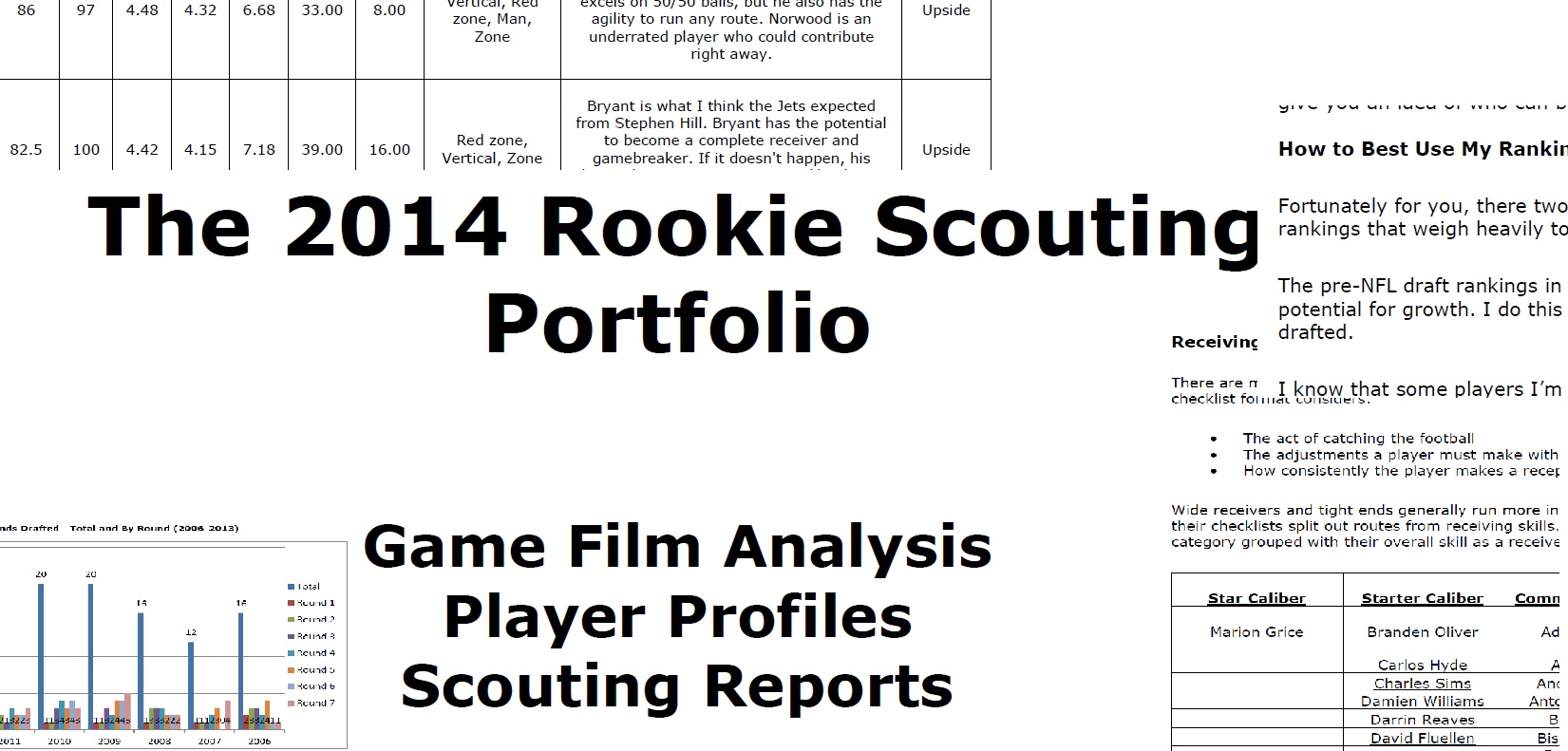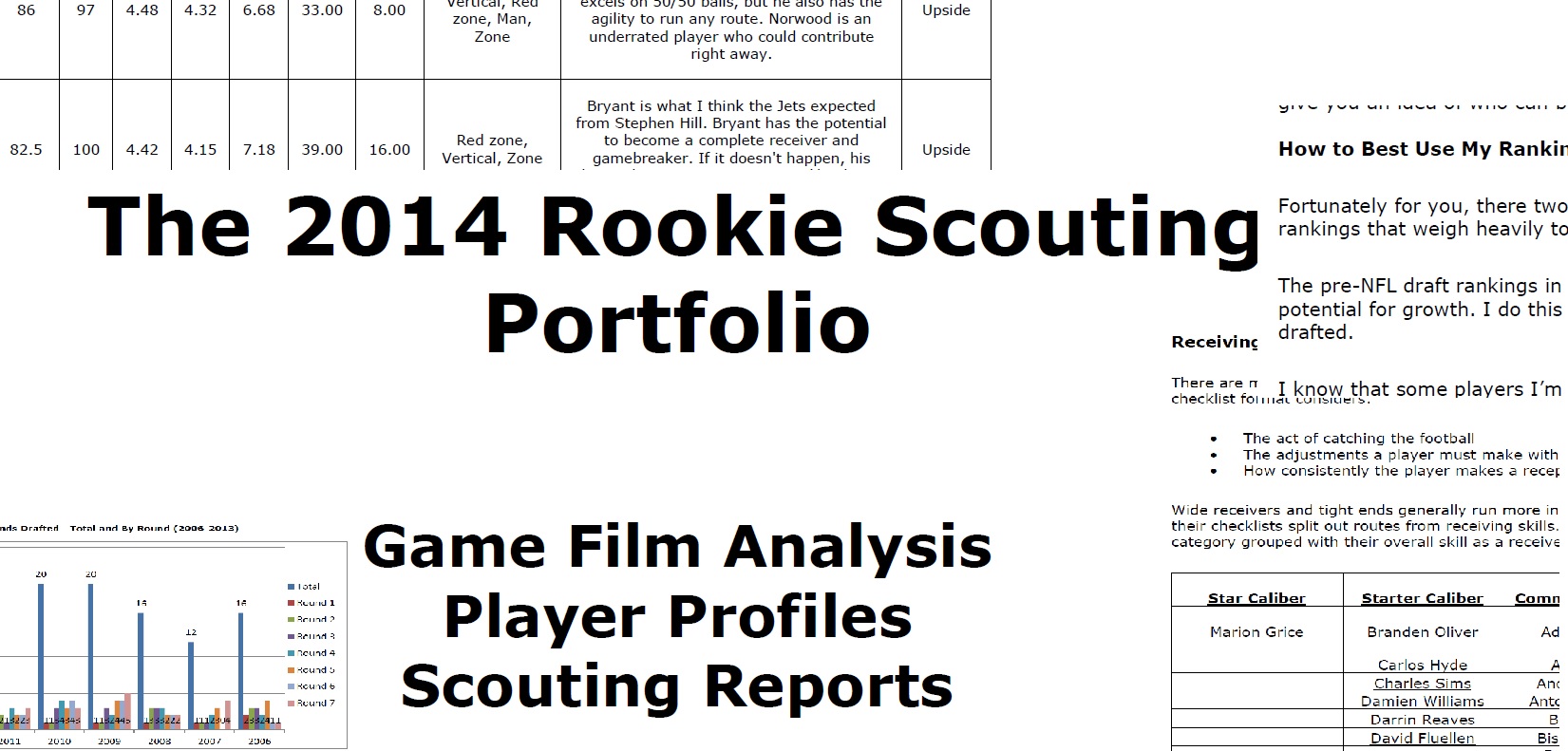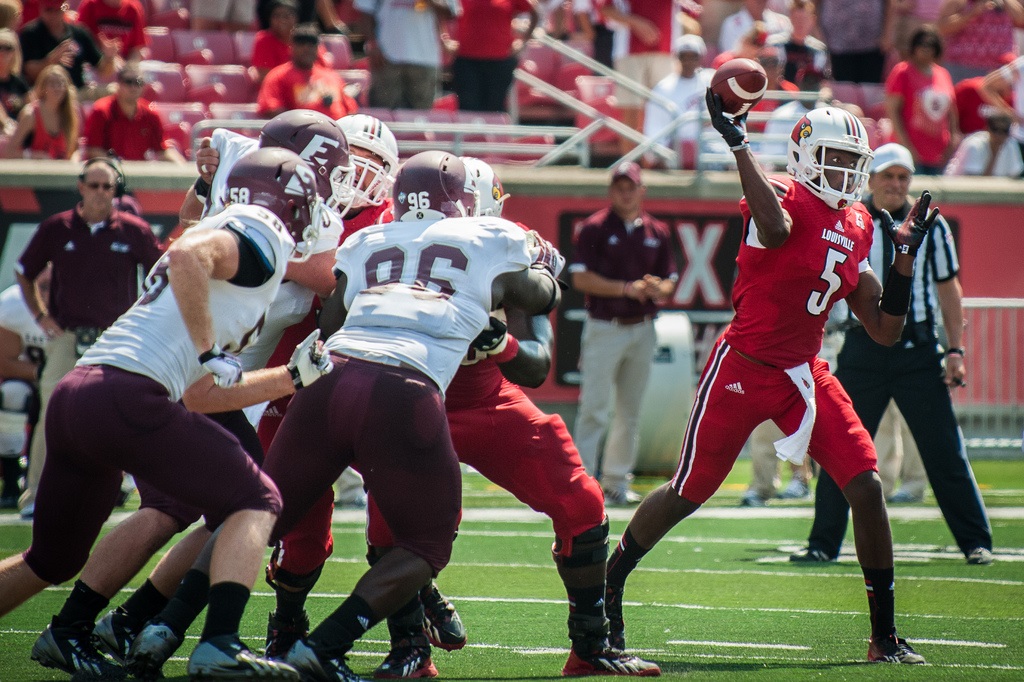
If blocking schemes were types of questions on a test, Matt Waldman explains why Bishop Sankey would be much better at true/false than multiple choice.
by Matt Waldman
This week’s Futures contains excerpts from the 2014 Rookie Scouting Portfolio, my 1284-page scouting report on 164 prospects at the offensive skill positions, which is available for download now. The RSP donates 10 percent of each purchase to Darkness to Light, a non-profit organization devoted to preventing sexual abuse through the training of individuals, communities, and organizations on its dynamics.
The draft community is split on Washington running back Bishop Sankey. Some consider him a top-five back. Others see a committee guy, but never a featured starter. I side more with the latter viewpoint, but I do see how Sankey can develop into a full-time starter.
The reason for this split is scheme fit. When Sankey is reading the defenders directly in front of him he can be decisive, get downhill fast, and get his pads low enough to split the defense. When he focuses on his blocks, he can press and cut back to aid his lineman’s effort.
But ask Sankey to read linebackers, corners, or safeties a level behind the immediate blocks happening at the line of scrimmage and he struggles. He gets confused or hesitant and his reactions are tentative and slow. The speedy back with quick cuts and momentum to carry a defender for 2-3 yards is gone.
I think these lapses are often more conceptual than physical. Certain blocking schemes are easier for him to see the field than others. When Sankey gets confused, you can see it with his footwork. He’ll stutter rather than cut and he winds up exposed to the defense.
I believe Sankey’s best chance to develop into a starter depends on him going to a team that runs a lot of gap-style plays. This includes traps, power, counter plays, and sweeps — run designs where linemen pull and the runner has one option and doesn’t have to do much reading of the defense pre-snap. It’s the running back’s equivalent of an exam with true/false questions.
In contrast, zone blocking is like multiple choice: it requires a runner has the skill to anticipate what the defense will do on a play. Sankey has the athleticism to create, but when given two-to-three options he doesn’t read the line fast enough to succeed on a consistent basis.
He’ll often bounce runs in directions where there’s little chance to gain yards on a play where he had a clear opportunity to diagnose it differently. Sankey also misses some downhill opportunities that require a decisive, aggressive mindset.
Maybe this improves, but right now Sankey is better in a gap-style offense that places tigher boundaries on his creative options. When this happens, he displays greater shiftiness, layers of moves to make defenders miss, and burst from his cuts.
Still, today’s Futures is not a balanced illustration of Sankey’s good and bad plays. It’s focused solely on difficult plays that often mark the difference between a future NFL starter and a future backup. Read the rest at Football Outsiders














